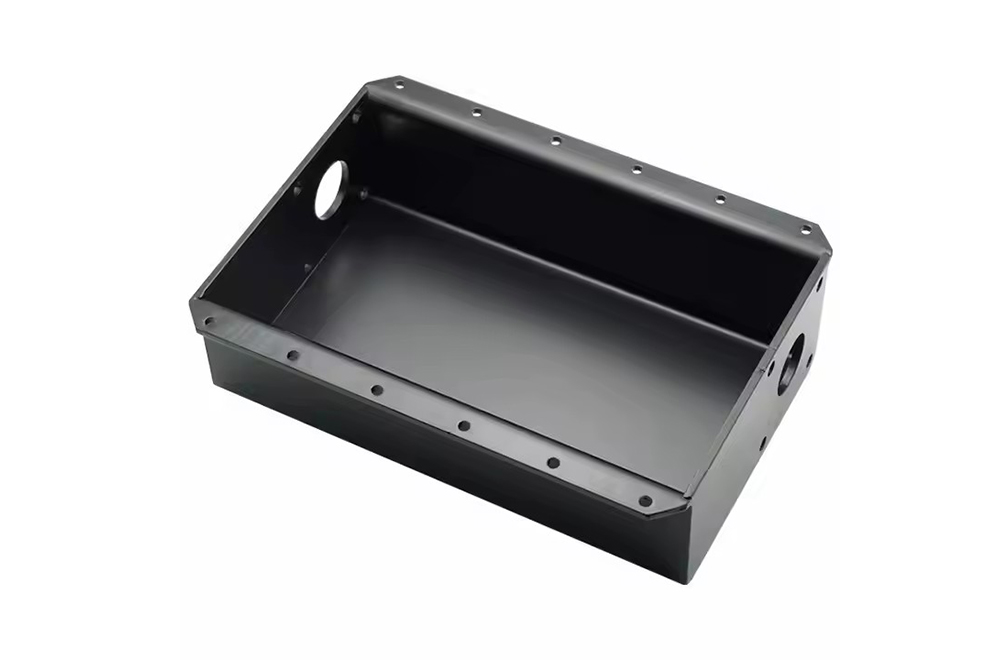Definition of Metal Bending
Metal bending refers to the process of deforming metal into specific angles, curves, or shapes without breaking it. By applying mechanical force, metals such as steel, aluminum, copper, or brass can be bent into desired geometries. The process is widely used to create structural parts, enclosures, panels, brackets, and more. Unlike cutting or welding, bending does not remove or add material but instead reshapes it, preserving its integrity and durability.

Process Flow
1. Design and Planning – Engineers create CAD models and determine bend angles, radii, and tolerances.
2. Material Selection – Metals are chosen based on strength, thickness, and ductility. Each type requires different pressure
and tooling.
3. Bending Methods –
Press Brake Bending: The most common, using a punch and die to form precise angles.
Roll Bending: Passing the sheet between rollers to form arcs or cylinders.
Rotary Draw Bending: Ideal for pipes and tubes, ensuring smooth curves.
Wipe Bending and Folding: Used for sheet edges and enclosures.
4. Springback Compensation – Adjustments are made to counter the natural tendency of metal to return slightly toward
its original shape.
5. Finishing and Inspection – After bending, parts undergo deburring, coating, and quality checks to confirm accuracy.
Services in Metal Bending
Custom Fabrication: Tailoring bends to meet unique design requirements.
Prototyping: Rapid development of test parts for validation before mass production.
High-Volume Production: Automated bending lines for large-scale manufacturing.
Surface Finishing: Painting, powder coating, or plating for corrosion resistance and aesthetics.
Value-Added Solutions: Including welding, assembly, and packaging to deliver complete components.
Advantages of Metal Bending
Cost Efficiency: Eliminates the need for multiple parts by creating complex shapes in a single bend.
Structural Integrity: Retains material strength since no cutting or welding is required.
Design Flexibility: Supports intricate shapes, curves, and enclosures.
Repeatability: CNC-controlled machines ensure consistent results across large batches.
Material Variety: Effective for steel, aluminum, titanium, and even softer metals like copper or brass.
Applications of Metal Bending
Construction: Beams, frames, and panels for infrastructure and buildings.
Automotive: Exhaust pipes, chassis parts, and brackets.
Aerospace: Lightweight curved panels, tubing systems, and structural reinforcements.
Furniture and Interior Design: Frames, decorative pieces, and ergonomic metal structures.
Electronics: Enclosures, housings, and heat-dissipation structures.
Energy and Utilities: Pipes, conduits, and support structures for renewable energy systems.
Development Prospects
1. Smart Manufacturing Integration – CNC press brakes connected to IoT systems enable real-time monitoring,
predictive maintenance, and production optimization.
2. Automation and Robotics – Robotic arms and automated tool changers reduce labor costs while increasing precision
and speed.
3. Sustainable Practices – Improved efficiency reduces material waste, supporting eco-friendly manufacturing.
4. Hybrid Fabrication Methods – Combining bending with laser cutting, welding, and additive manufacturing expands
design possibilities.
5. Global Growth – With sectors like renewable energy, electric vehicles, and urban infrastructure expanding, demand for
advanced bending solutions is set to rise.
Conclusion
Metal bending, though rooted in traditional techniques, has transformed into a high-tech process central to modern industry. From precise aircraft components to the steel structures of urban skylines, bent metal parts form the backbone of countless products. With digital control, automation, and sustainability driving its future, metal bending is no longer just about shaping metal—it is about shaping the future of manufacturing itself.

